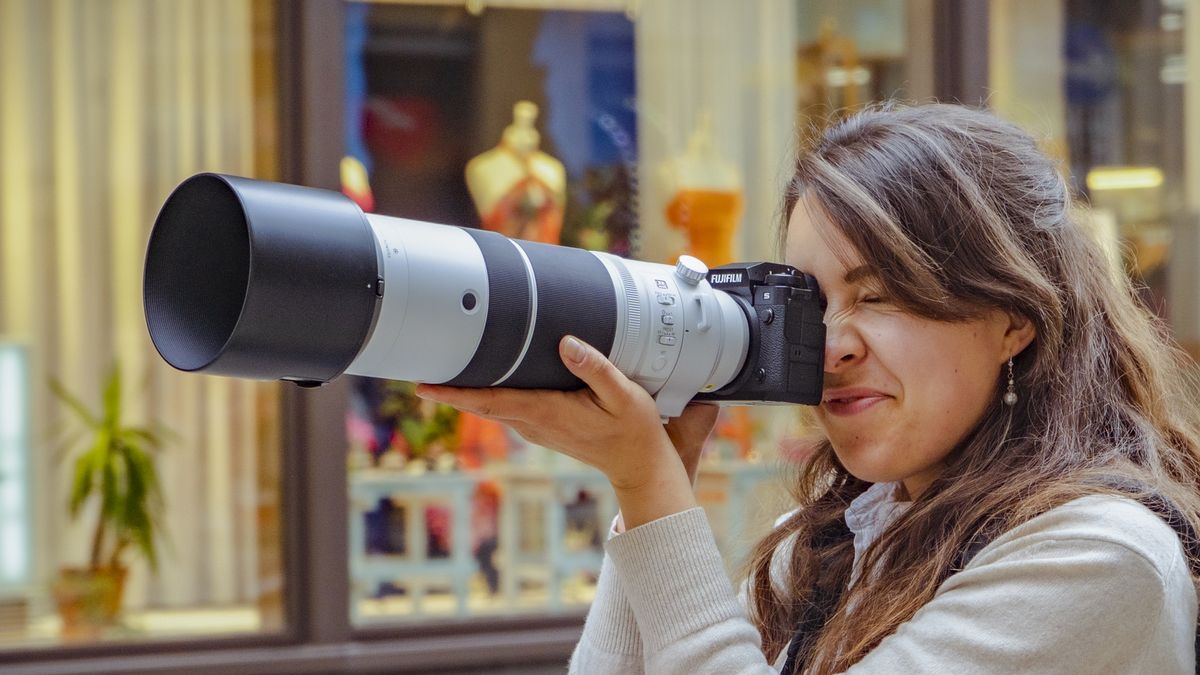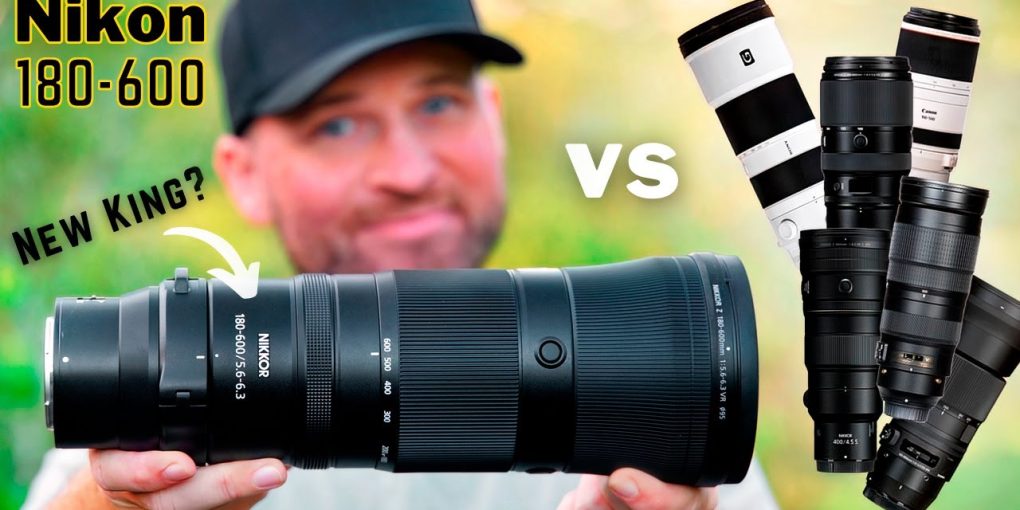Nikon 200-500Mm vs Sigma 150-600Mm Contemporary: The Ultimate Lens Showdown!
The Nikon 200-500mm and Sigma 150-600mm Contemporary are both versatile telephoto lenses. The Nikon lens offers a wider aperture range, making it suitable for low light conditions and achieving a shallower depth of field.
On the other hand, the Sigma lens provides a longer zoom range, providing greater flexibility for capturing distant subjects. Both lenses have their strengths and weaknesses, and the choice between the two ultimately depends on the specific needs and preferences of the photographer.
We will compare the Nikon 200-500mm and Sigma 150-600mm Contemporary lenses in terms of image quality, build, autofocus performance, and price, to help you make an informed decision when choosing the right telephoto lens for your photography endeavors. As telephoto lenses are essential for capturing distant subjects and wildlife, it’s crucial to invest in a lens that meets your requirements. Whether you’re a wildlife photographer eager to capture animals in their natural habitat or a sports enthusiast hoping to freeze the action on the field, selecting the ideal telephoto lens is vital. This article aims to provide a comprehensive comparison of the Nikon 200-500mm and Sigma 150-600mm Contemporary lenses, assisting you in identifying the most suitable option for your photographic needs. We will analyze various aspects, including image quality, build and ergonomics, autofocus performance, and pricing, to equip you with the necessary knowledge to make an informed decision. By the end of this comparison, you’ll have a clear understanding of which telephoto lens best aligns with your photography goals.

Credit : www.photographylife.com
Table of Contents
- Nikon 200-500Mm vs Sigma 150-600Mm Contemporary
- Price And Availability
- Performance
- Build And Handling
- Versatility
- Feature Comparison
- User Experience
- Frequently Asked Questions Of Nikon 200-500mm Vs Sigma 150-600mm Contemporary
- Nikon 200-500mm Vs Sigma 150-600mm Sample Image
- What Are The Key Differences Between Nikon 200-500mm And Sigma 150-600mm Contemporary?
- Which Lens Is Better For Wildlife Photography, Nikon 200-500mm Or Sigma 150-600mm?
- Can You Use Nikon 200-500mm And Sigma 150-600mm For Sports Photography?
- Which Lens Is More Suitable For Bird Photography, Nikon 200-500mm Or Sigma 150-600mm?
- Conclusion
- CallofPhotography
Nikon 200-500Mm vs Sigma 150-600Mm Contemporary
Price And Availability
Price and Availability
The Nikon 200-500mm lens is priced at approximately $1400, while the Sigma 150-600mm Contemporary is priced at around $1000. Both lenses are readily available through authorized retailers and online platforms.
When considering the cost analysis, it is evident that the Sigma 150-600mm Contemporary offers a more budget-friendly option without compromising quality.
In terms of availability and packages, both lenses are commonly stocked by major photography retailers and can also be purchased as part of bundle deals, offering added value to consumers.
Performance
Performance:
When comparing the Nikon 200-500mm and the Sigma 150-600mm Contemporary, both lenses deliver impressive image quality. The Nikon produces sharp, detailed images with excellent contrast and minimal distortion, while the Sigma offers equally compelling results, especially when stopped down. As for autofocus speed, the Nikon 200-500mm demonstrates swift and accurate focusing, making it ideal for capturing fast-paced action, while the Sigma 150-600mm Contemporary also showcases impressive autofocus performance, ensuring sharp and clear shots even in dynamic shooting scenarios.
Build And Handling
Construction Material: The Nikon 200-500mm lens boasts a durable construction, featuring a combination of metal and high-quality plastic, ensuring longevity and reliability. On the other hand, the Sigma 150-600mm Contemporary lens employs a robust, thermally stable composite material which is both lightweight and capable of withstanding varying weather conditions.
Ergonomics and Weight: The Nikon lens offers a comfortable grip and well-balanced handling. Despite its substantial weight, the lens is designed to provide stability during use. Conversely, the Sigma lens is notably lighter, which makes it more manageable during extended shooting sessions. Its ergonomic design ensures ease of use without compromising on performance.

Credit: www.digitalcameraworld.com
Versatility
Nikon 200-500mm: Offers versatile range for different photography needs.
Sigma 150-600mm Contemporary: Greater focal length range for capturing distant subjects.
| Focal Length Range | Suitable Photography Scenarios |
|---|---|
| 200-500mm | Wildlife, sports photography, landscape shots |
| 150-600mm | Bird watching, wildlife in motion, distant objects |
Feature Comparison
The Nikon 200-500mm and Sigma 150-600mm Contemporary both offer impressive features for wildlife and sports photography. When comparing the aperture size, the Nikon lens has a constant maximum aperture of f/5.6 throughout the zoom range, while the Sigma lens has an aperture that varies from f/5 to f/6.3. The Nikon lens gains an advantage here, providing a wider aperture for better low-light performance and subject separation.
Image stabilization is another crucial factor to consider. Both lenses incorporate optical image stabilization, which helps to minimize camera shake and blur. The Nikon lens boasts Nikon’s Vibration Reduction (VR) technology, known for its superior image stabilization capabilities. On the other hand, the Sigma lens comes with its Optical Stabilizer (OS) system, offering commendable stabilization performance.
Overall, while both lenses have their strengths and weaknesses, the Nikon 200-500mm stands out with its constant aperture and renowned Vibration Reduction technology. However, the Sigma 150-600mm Contemporary lens provides an excellent alternative at a more affordable price point.

Credit: www.digitalcameraworld.com
User Experience
The real-world feedback for both the Nikon 200-500Mm and Sigma 150-600Mm Contemporary lenses has been overwhelmingly positive. Users have praised the ease of use of both lenses, making them suitable for amateur photographers as well as professionals. The buttons and switches on the lenses are logically placed and easy to access, allowing for quick adjustments while shooting. The autofocus performance of both lenses is also highly regarded, with fast and accurate focusing even in challenging conditions. The image quality produced by these lenses is exceptional, with sharpness and clarity that rivals more expensive options. Additionally, the portability of these lenses is another notable feature, making them great for photographers on the move. Whether you choose the Nikon or the Sigma lens, you can expect a great user experience.

Credit: m.youtube.com
Frequently Asked Questions Of Nikon 200-500mm Vs Sigma 150-600mm Contemporary
Nikon 200-500mm Vs Sigma 150-600mm Sample Image

Credit : www.photographylife.com
What Are The Key Differences Between Nikon 200-500mm And Sigma 150-600mm Contemporary?
In terms of image quality, Nikon 200-500mm provides sharper results with better color accuracy, while Sigma 150-600mm offers a longer zoom range. Nikon lens may be more expensive but offers superior build quality.
Which Lens Is Better For Wildlife Photography, Nikon 200-500mm Or Sigma 150-600mm?
Both lenses are great for wildlife photography, but Sigma 150-600mm provides a longer reach, making it ideal for capturing distant subjects. Nikon 200-500mm excels in sharpness and color rendition, suitable for closer shots.
Can You Use Nikon 200-500mm And Sigma 150-600mm For Sports Photography?
Yes, both lenses can be used for sports photography. Sigma 150-600mm offers versatility in focal length, allowing you to capture action from a distance. Nikon 200-500mm, on the other hand, provides excellent sharpness for fast-moving subjects.
Which Lens Is More Suitable For Bird Photography, Nikon 200-500mm Or Sigma 150-600mm?
For bird photography, Sigma 150-600mm’s longer focal length enables you to capture birds in flight or perched at a distance. However, Nikon 200-500mm’s superior image quality can result in stunning bird portraits with fine details.
Conclusion
As you weigh the Nikon 200-500mm against the Sigma 150-600mm Contemporary, it’s clear that both excel in capturing stunning images. Depending on your specific needs, one lens may outshine the other. Consider your shooting style and preferences to make the best choice.
Happy shooting!
I am a photography enthusiast turned blogger, sharing my passion and expertise on her blog, "CallofPhotography." Growing up surrounded by nature, I developed a love for capturing moments through my lens. After studying Fine Arts with a focus on photography, I launched my blog to share tutorials, gear reviews, and my own photographic work. Through engaging storytelling, I invites readers to join her visual journey, inspiring and empowering photographers of all levels worldwide.


